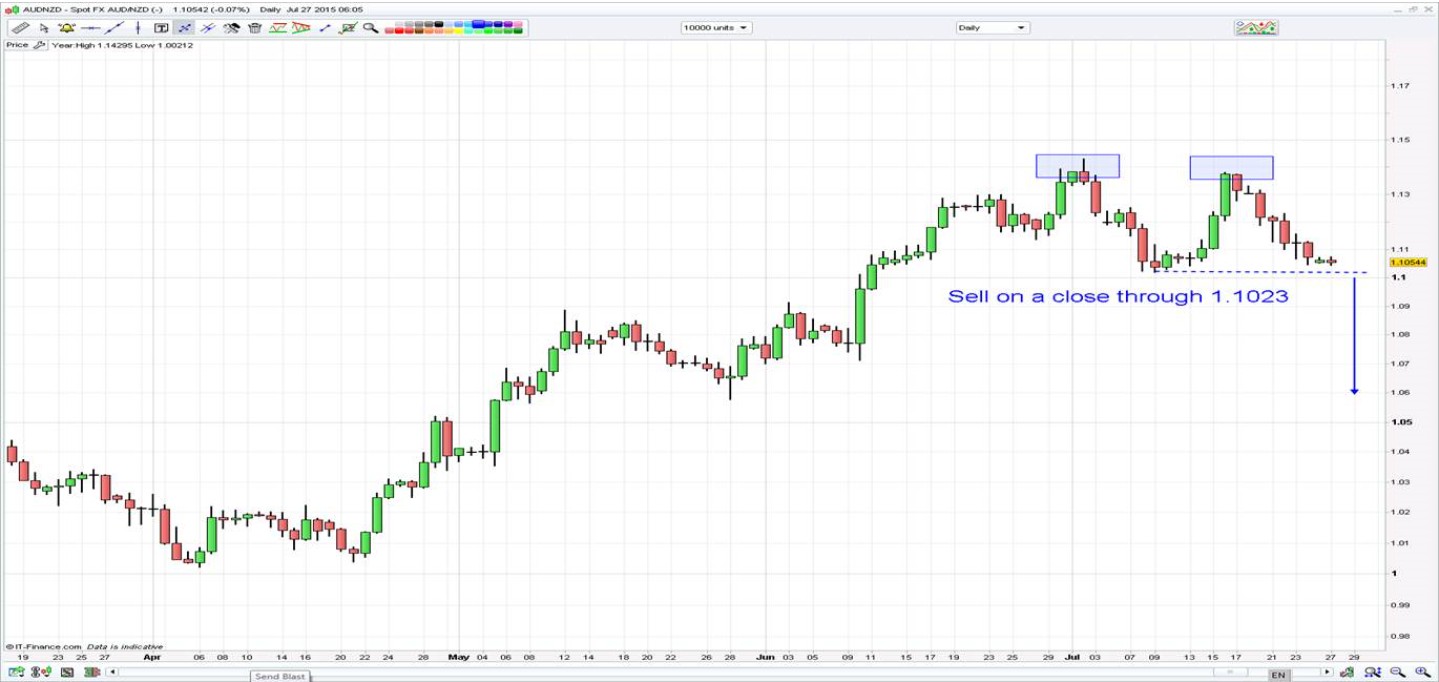Chris Weston, Chief Market Strategist at IG Markets
Markets have opened on a fairly subdued note, although on a net basis the bears have got the upper hand.
S&P futures are unchanged on the day, while commodity futures have generally been offered. AUD/USD has traded in a 33-pip range and is practically unchanged. Asian equities are modestly lower and playing catch-up to US leads. China is the big underperformer.
Last week saw the strong USD, weak commodity/emerging market trade come fully into the market’s sights and many are asking if we have reached a saturation point and peak negativity. Gold really springs to mind here given the magnitude of the bearish articles over the last few days; the fact most have focused on the leveraged community swinging to its first ever net short position could be a contrarian indicator in itself. It does feel that a bounce in commodities is due, but a bounce is all it will be – an opportunity to sell at more compelling levels.
A number of traders have suggested the key event this week is the July FOMC meeting (Thursday 04:00 AEST) but I would place more weight on China’s official PMI data, although this is released on Saturday. Given the narrative from key personnel at companies like Caterpillar, Alcoa, Untied Technology’s and Anglo American, I think the market is now super sensitive to anything focusing on China’s growth prospects.
That’s not to say the Fed meeting is not a big event, but it’s hard to feel we are going to see anything too aggressive from them. I do feel the September meeting is key though – one just has to look at the divergence between interest rate market pricing and sell-side economists’ forecasts. 85% of economists feel we will start to see the Fed lift the funds target range at the September meeting. However, the market is pricing a modest 10 basis points of tightening over the coming three months and only 26 basis points over the coming six months. Someone is right and someone is wrong here. Divergence is the key theme.
Still, it seems unlikely we’ll get the smoking gun that signals a clear intent to lift the funds rate in September at this week’s meeting. As a result, there is the possibility that some disappointment is displayed from the USD bulls, especially with the speculative community having increased USD exposure to the highest level in six weeks at $21.3 billion. The wash-up of this involves a potentially modest covering of bearish commodity and equity positioning in response.
It doesn’t seem logical that the Fed are going to suddenly revert back to a date-dependant mantra after spending so long trying to convince the market it’s views on policy were completely data-driven. With that in mind, I feel the most sensible thing to do is wait for the market to define the trade.
Specific trades I like include:
EUR/USD – Easing into EUR/USD short positions closer to $1.1040 and respecting the June downtrend and 38.2% retracement level of the June-to-July sell-off. The real action then happens on a close through the May low (and May/June double top neckline) of $1.0819. On this development, I would be targeting $1.04.
AUD/NZD – A close below the 8 July low (and double top neckline) of NZD1.1023 would suggest looking more positively at short positions. Look for a move into the NZD1.06 area.

AUD/USD – Momentum and trend suggest rallies should be capped around the $0.7350-to-$0.7400 region and within the bearish trend. Stops could be placed above $0.7500 and just above the recent consolidation for a move into the $0.7200 area.
Markets to watch:
iShare MSCI emerging market ETF (EEM) – The index is oversold, but not grossly, and is threatening to test the 8 July low. In fact, momentum favours a break of the 2012 lows soon, which would be a significant event. Brazil caused a few ripples recently by revising its primary surplus target for 2015, 2016 and 2017. The wash-up here is that we could see ratings agency Moody’s cut the country’s sovereign rating below investment grade, which could lead to potential outflows north of $50 billion from their financial markets. While the reasoning’s are very different, there’s also a possibility S&P could cut the Australian rating to AA-, which could place upside pressure on the term cost of banks’ wholesale funding.
It’s therefore interesting to overlap a chart of the Brazilian stock market and the ASX 200 over the last few years and see the correlation. What’s more, if you look at market composition in Brazil, Vale, Petrobras and the top three banks make up 40% of the index market cap. To many Australian market watchers, this would sound fairly familiar. Obviously, the Australian banks are much more secure and well-capitalised than their Brazilian counterparts.
S&P 500 – As always, moves in the S&P will have a knock-on effect on Asia (including the ASX 200). Short-term momentum is headed lower, as seen in the MACD crossover. Whether this produces a reliable sell signal is yet to be seen, but the bottom of the multi-month range is at 2040. This would be a key development and with 170 US corporates due to report earnings, this is a big week for the S&P 500.
China CSI 300 – The index may have rallied 0.6% last week, but the sellers are pushing the index down 1.8% today. Poor industrial profits are seemingly behind the moves, but price action in this market will be worth watching as the index rejected the 50% level of the massive sell-off between June to July and there is talk of widening the renminbi band.